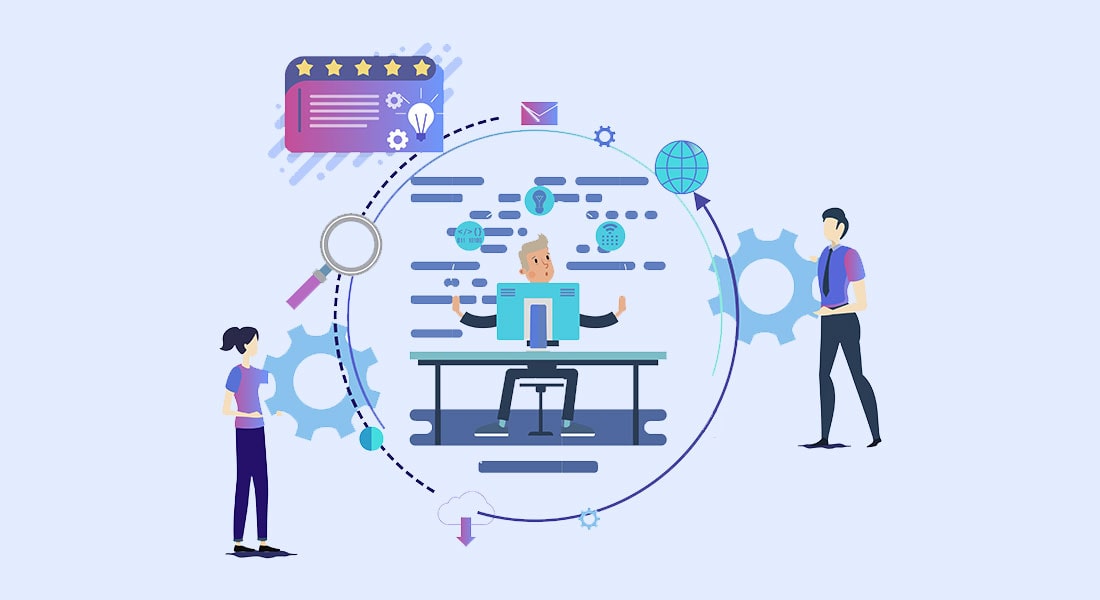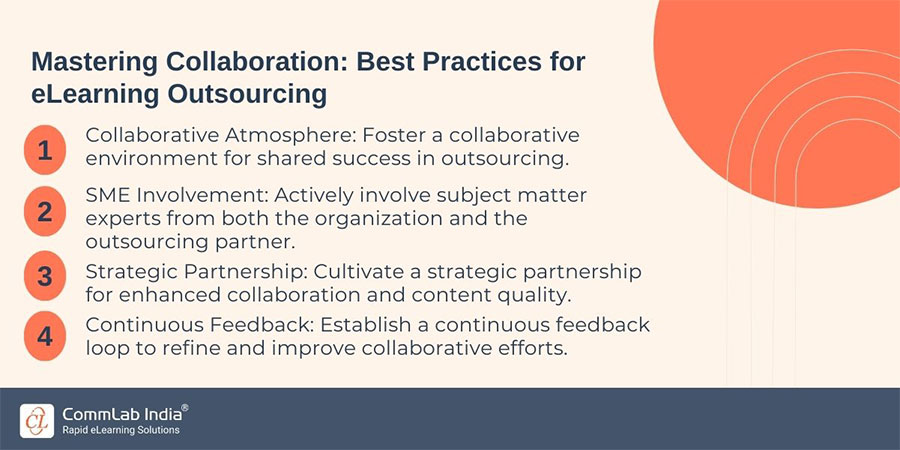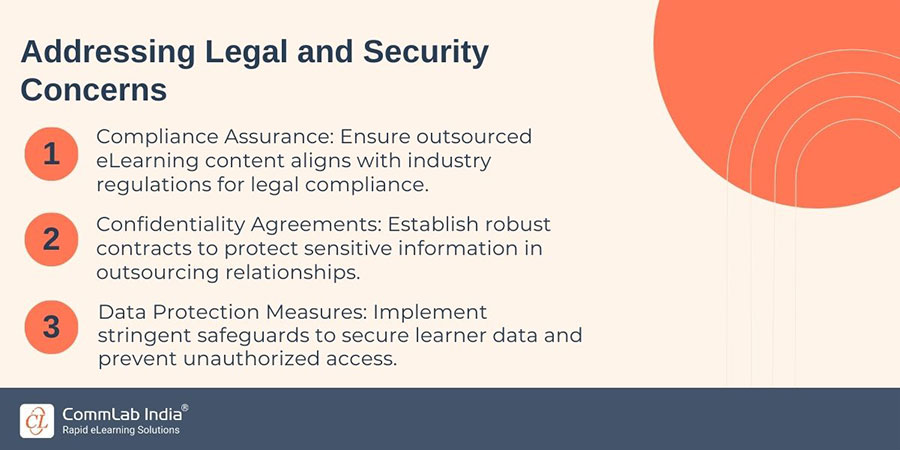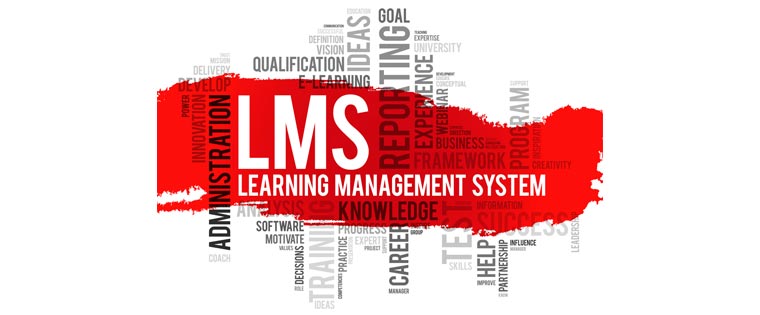Must-Read! Insider’s Guide to Outsourcing eLearning Content Development

Ever found yourself lost in the maze of corporate training needs, wondering if there's a shortcut to exceptional eLearning content? Picture a scenario: a global workforce with diverse learning requirements, an L&D team juggling tight schedules, and the need for innovative training solutions. How do you navigate this dynamic terrain? The answer lies in outsourcing eLearning content development, a strategic leap that infuses agility and expertise into the training landscape.
This guide, crafted as a compass, aims to equip L&D professionals with the navigational tools for a successful outsourcing journey, turning the conventional into the extraordinary.
Navigating Excellence: The Imperative of eLearning Outsourcing
In the intricate realm of corporate learning, outsourcing eLearning content is not just a choice but a strategic necessity. It unlocks a treasure trove of agility and expertise, essential for meeting the ever-evolving demands of employee training in today's dynamic business landscape.
Does Outsourcing eLearning Benefit Corporate Training? [Watch Video]
Let us now explore the process of outsourcing eLearning content development:
Outsourcing eLearning Content Development — A Step-by-Step Guide
1. Understanding the Need for Outsourcing
Before diving into the eLearning outsourcing process, it's crucial to understand the driving factors. Whether it's a lack of in-house expertise, tight deadlines, or the need for specialized content, identifying the specific needs sets the foundation for a targeted outsourcing strategy.
Example: Consider a scenario where a company is expanding its operations globally and needs multilingual training content. Outsourcing becomes a strategic choice to ensure culturally relevant and linguistically accurate materials.
2. Defining Clear Objectives and Scope
To fully harness the advantages of outsourcing eLearning content, a meticulous definition of objectives and scope is very important. This involves delineating the learning goals, identifying the target audience, and specifying the expected outcomes. This step is instrumental in ensuring a seamless alignment between the organization's training objectives and the content being outsourced.
Example: Suppose the overarching goal is to elevate sales skills within the field force. In this scenario, the outsourcing scope might encompass interactive simulations, specialized scenario-based modules, and assessments finely tuned to the intricacies of the sales domain. This tailored approach ensures that the outsourced content precisely meets the organization's unique training needs and objectives.
3. Selecting the Right Outsourcing Partner
Choosing the right outsourcing partner is a pivotal step. Consider factors such as expertise in eLearning development, industry experience, and a proven track record. Requesting and evaluating samples of previous work helps in assessing the partner's capabilities.
Example: For a healthcare company, partnering with an outsourcing firm with a history of creating compliance training modules within the healthcare sector ensures content accuracy and relevance.
4. Establishing Effective Communication Channels
Smooth communication is the backbone of successful outsourcing. Establish clear and efficient channels for communication, including regular progress updates, feedback sessions, and a well-defined escalation process for issue resolution.
Example: Using project management tools and scheduling regular virtual meetings can enhance communication, keeping all stakeholders informed and engaged throughout the development process.
→ Download Now: Selecting the Right eLearning Vendor [eBook]
5. Collaborative Content Development
Rather than a one-sided transaction, outsourcing should be viewed as a collaborative effort. Encourage knowledge sharing, involve subject matter experts (SMEs) from both sides, and create a partnership where insights from the organization complement the expertise of the outsourcing partner.
Example: An IT company outsourcing cybersecurity training might involve its in-house security experts to ensure the accuracy of technical content.

6. Quality Assurance and Review Processes
Implementing robust quality assurance measures is non-negotiable. This involves setting clear quality standards, conducting periodic reviews at predefined milestones, and ensuring outsourced content aligns seamlessly with organizational expectations and industry benchmarks.
Example: For instance, consider a manufacturing firm outsourcing safety training. Their review process could extend beyond L&D professionals to involve safety officers, validating the accuracy and relevance of the content. Such meticulous quality assurance guarantees that the outsourced content not only meets but exceeds the organization's standards, ensuring a seamless and effective integration into the learning environment.
7. Addressing Legal and Security Concerns
Ensure compliance with legal and security protocols. Establish confidentiality agreements, data protection measures, and intellectual property rights to safeguard both parties involved in the outsourcing arrangement.
Example: In the financial sector, outsourcing eLearning modules on regulatory compliance requires adherence to strict data protection and confidentiality standards.

8. Piloting and Iteration
Before proceeding with full-scale deployment, it's prudent to conduct a pilot of the outsourced content with a select group of learners. This strategic move allows for the collection of valuable feedback, careful analysis of results, and subsequent iterations based on insights gleaned during the pilot phase.
Example: Imagine piloting a customer service training module before launching it organization-wide. This approach not only reveals potential areas for improvement but also ensures that the content resonates effectively with the target audience, aligning the training closely with the specific needs and expectations of the learners.
9. Monitoring and Continuous Improvement
Following implementation, institute robust mechanisms for ongoing monitoring and continuous improvement. Conduct regular assessments to gauge the effectiveness of the outsourced content, actively seek learner feedback, and leverage data analytics for informed decision-making and improvements.
Example: In the case of a technology company outsourcing software training, implementing a system to track learner performance metrics and collecting user feedback becomes crucial. This iterative feedback loop allows the content to evolve continuously, staying synchronized with the dynamic landscape of software updates and ensuring the training remains highly relevant and effective.
Wrapping Up
Outsourcing eLearning content development is a strategic move that, when executed thoughtfully, can bring about transformative results in corporate training. This step-by-step guide equips L&D professionals with the tools to navigate the outsourcing landscape, ensuring a seamless process from conceptualization to continuous improvement. Embrace outsourcing as a dynamic strategy to elevate your organization's learning initiatives and stay ahead in the ever-evolving realm of corporate training.
Take the Next Step: Download Our eBook on Choosing the Perfect eLearning Partner Now!




![Insider Tips to Unleash Multimedia in E-learning [Infographic]](https://blog.commlabindia.com/hubfs/Imported_Blog_Media/multimedia-learning.jpg)
![How to Set Up Your ILT Initiative [Infographic]](https://blog.commlabindia.com/hubfs/Imported_Blog_Media/set-up-ilt-initiative-infographic1.jpg)